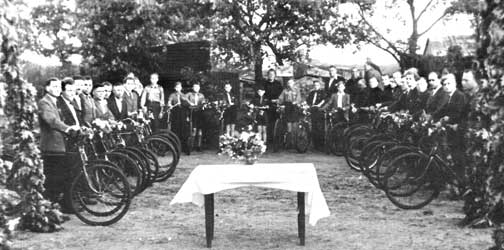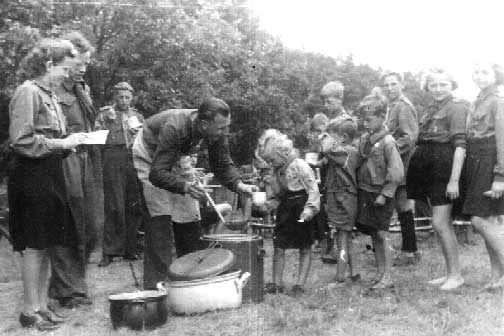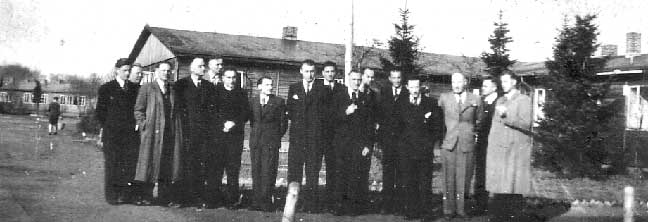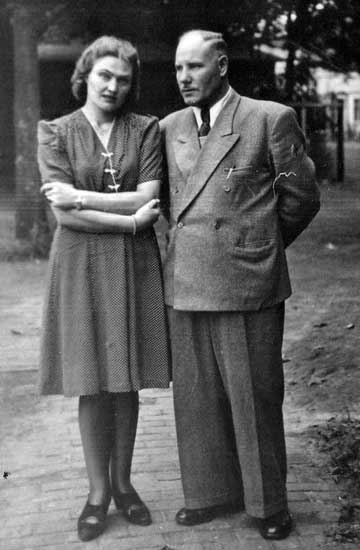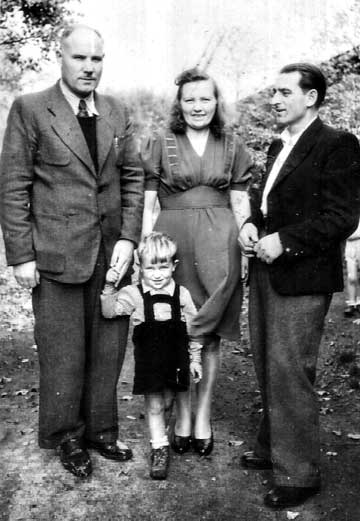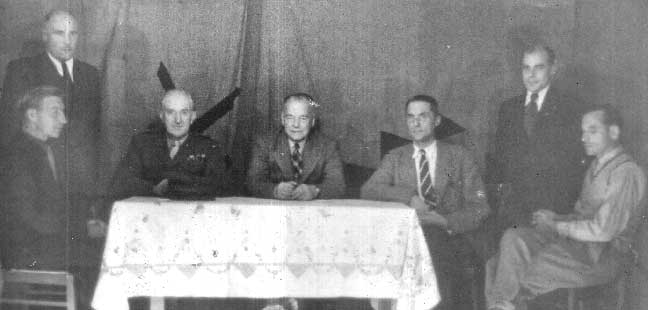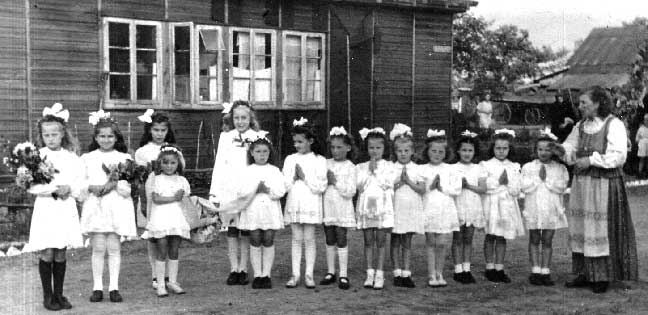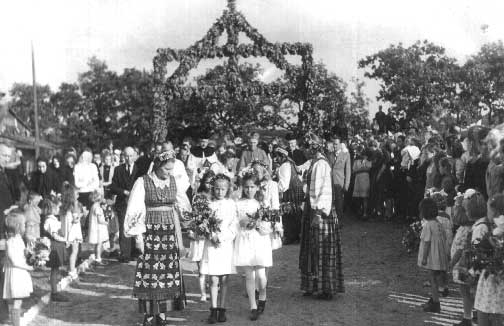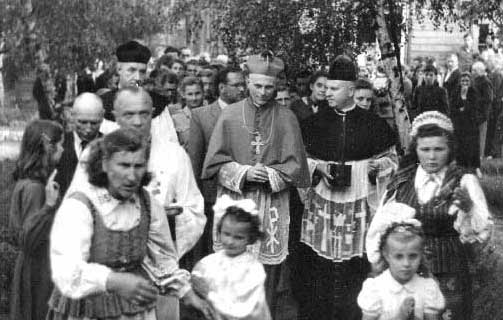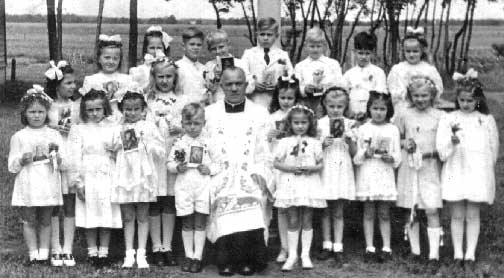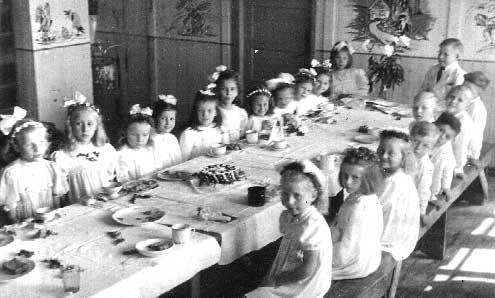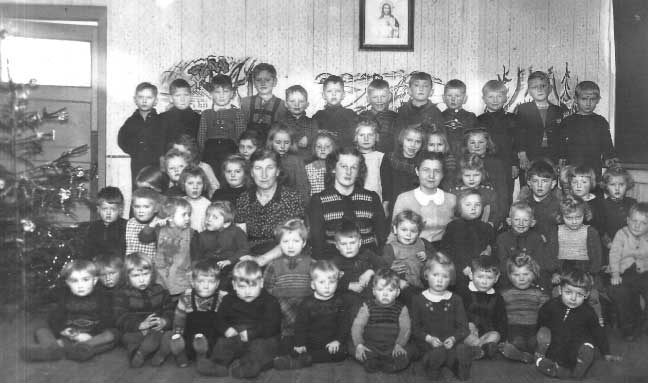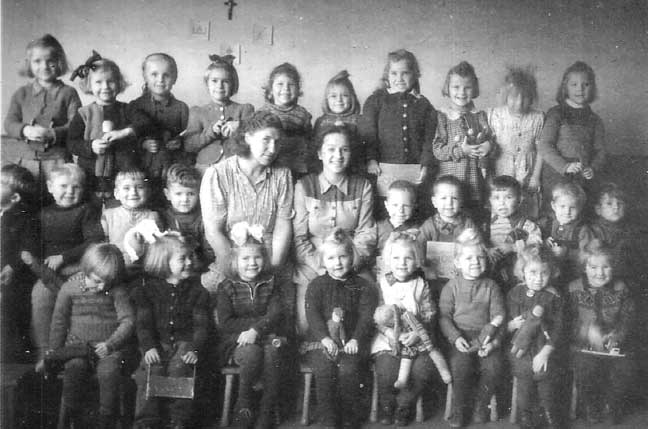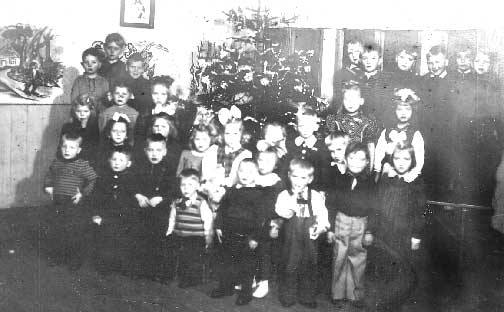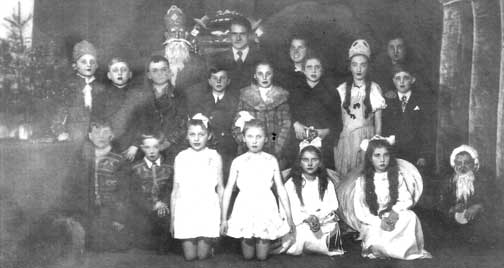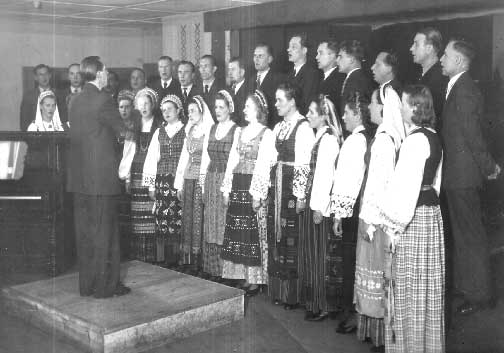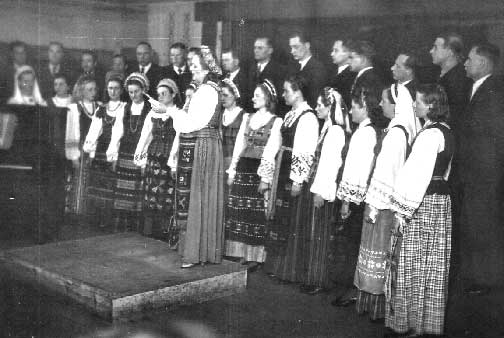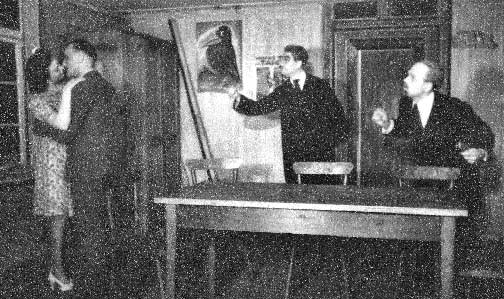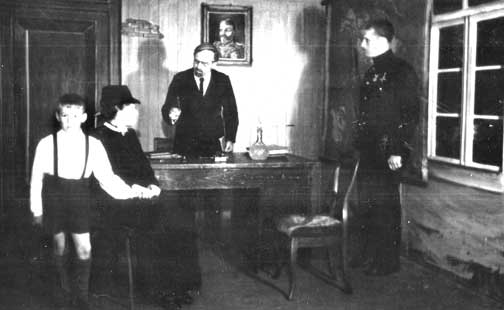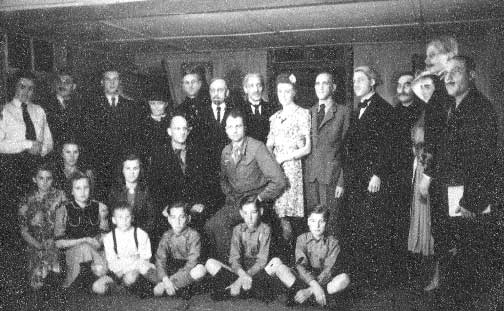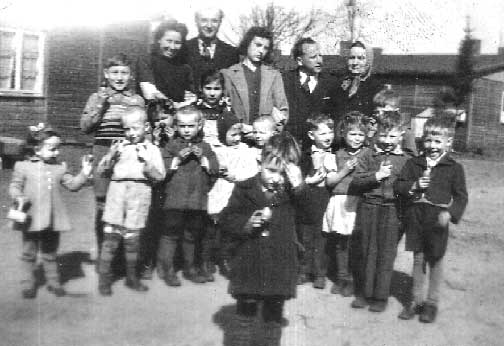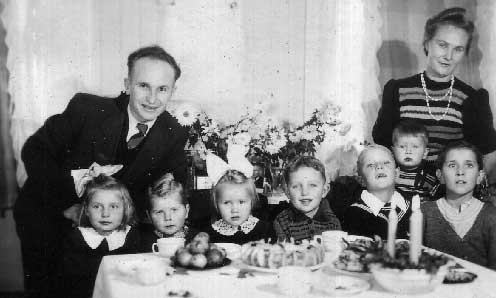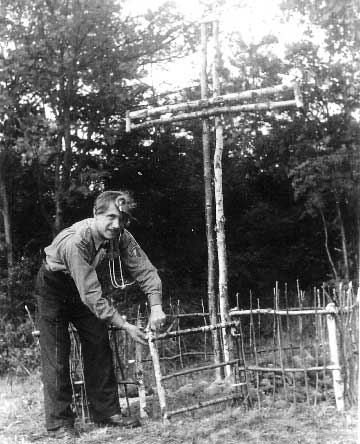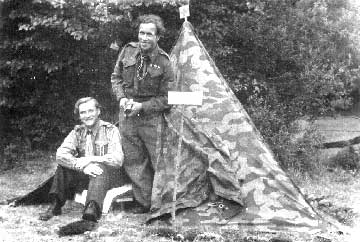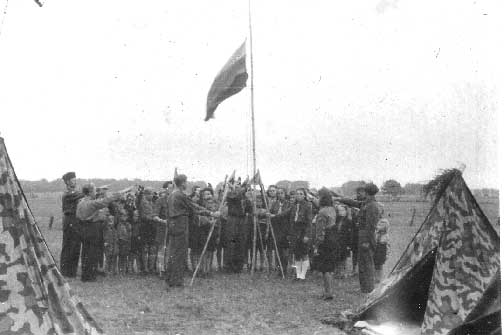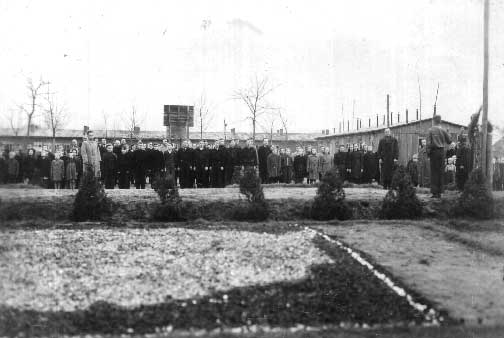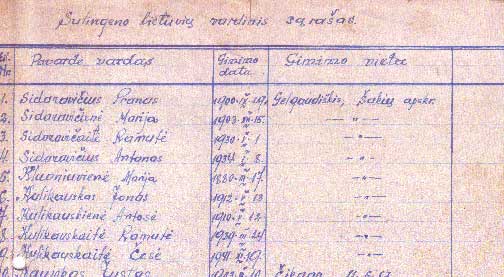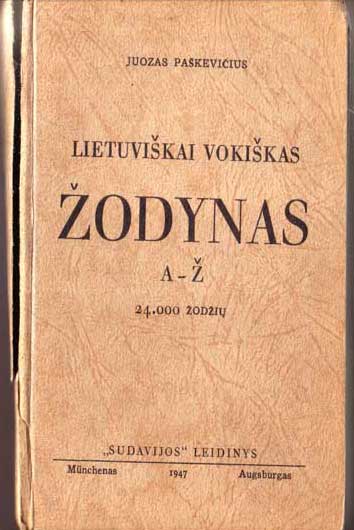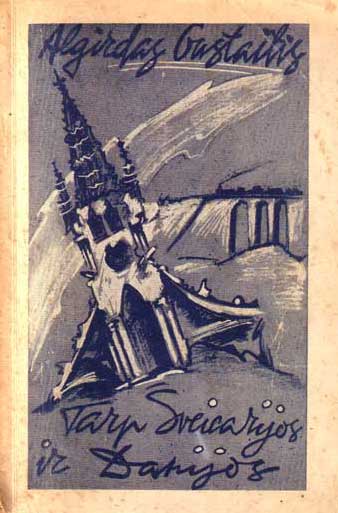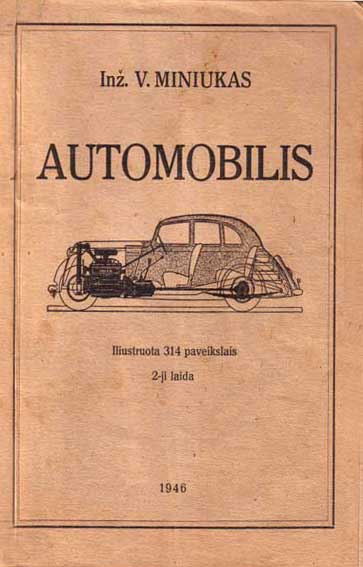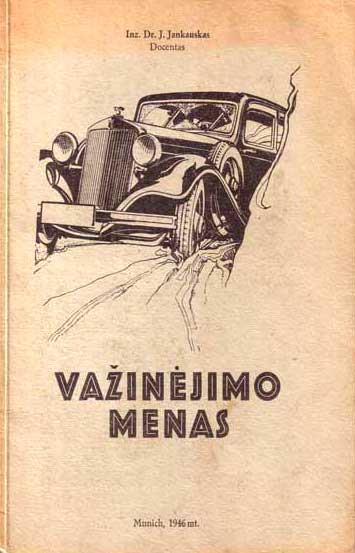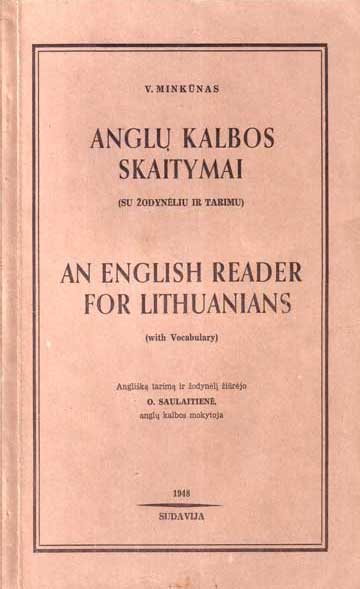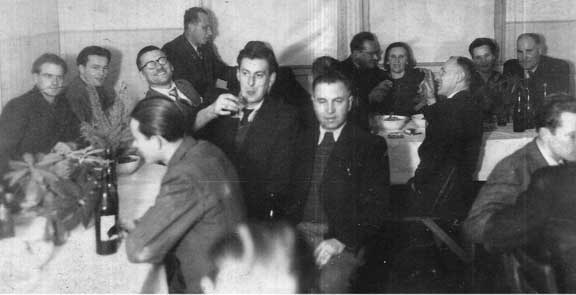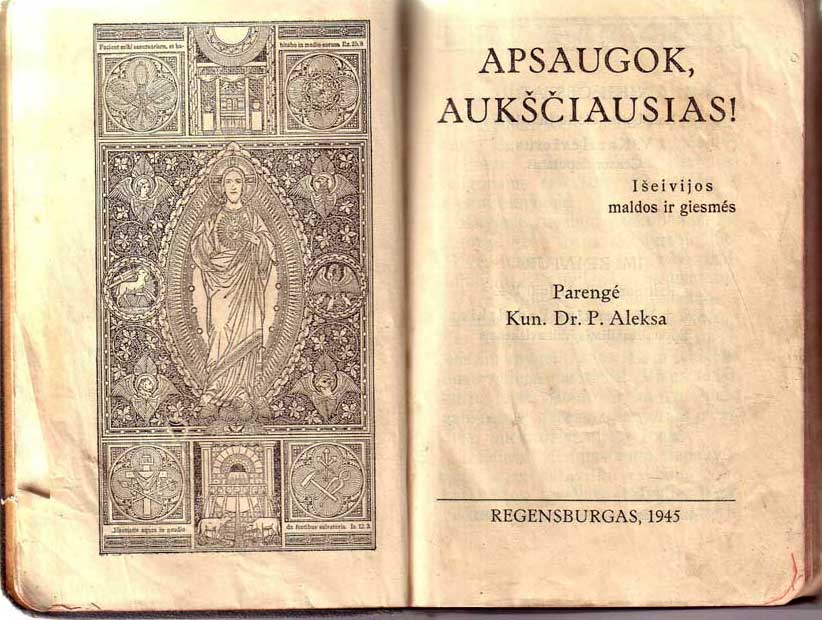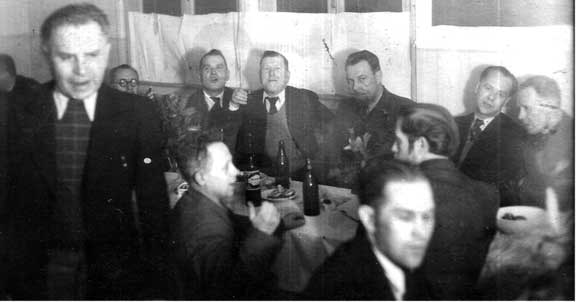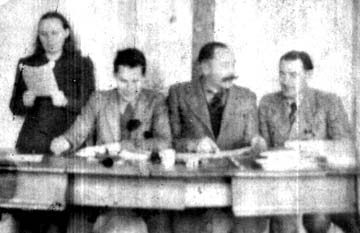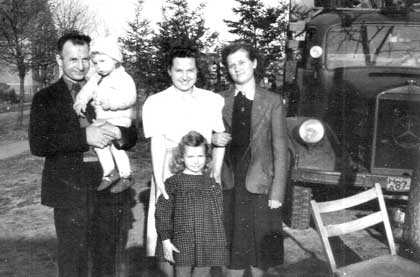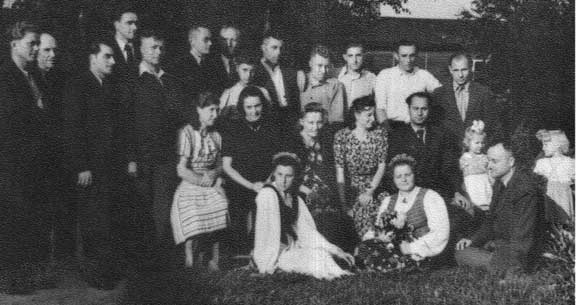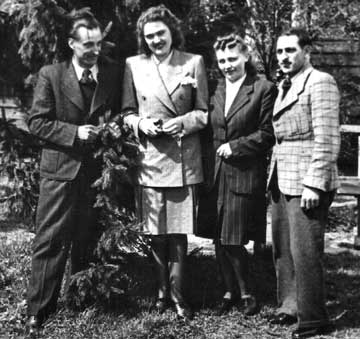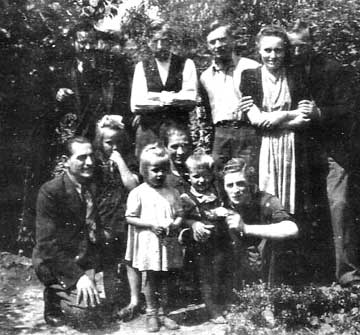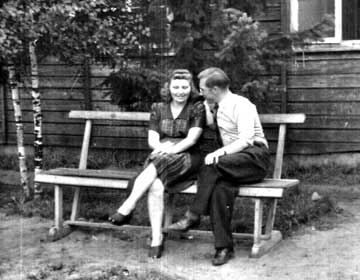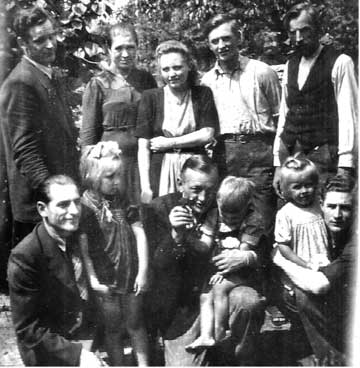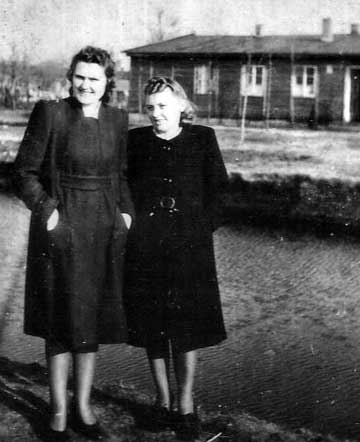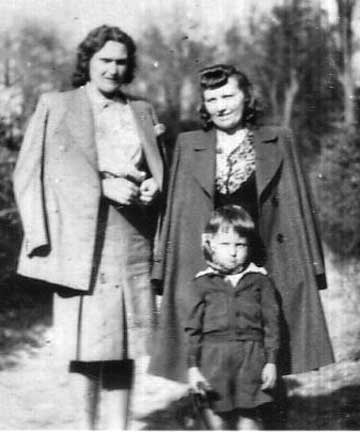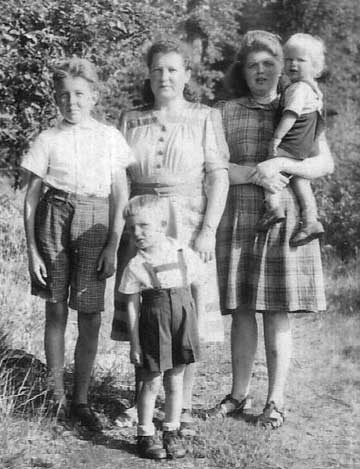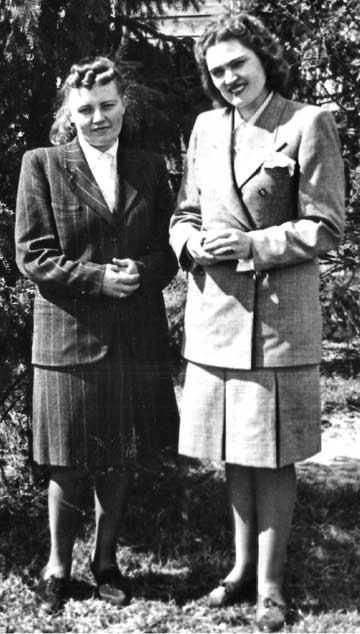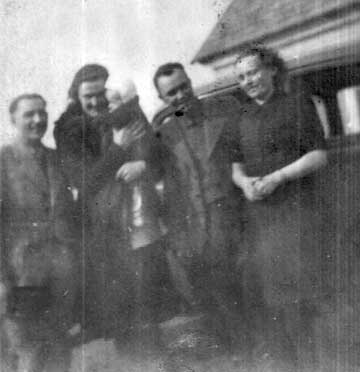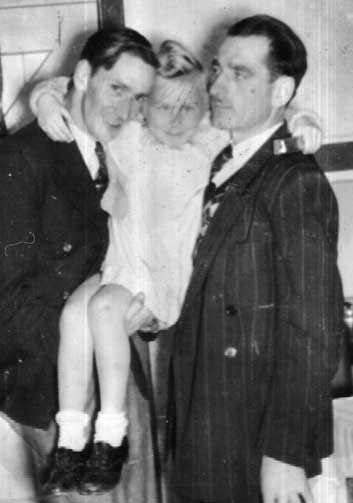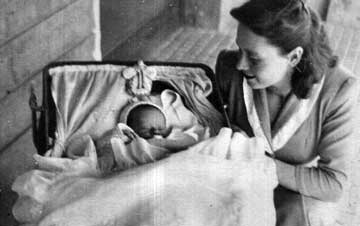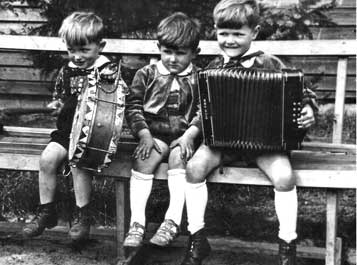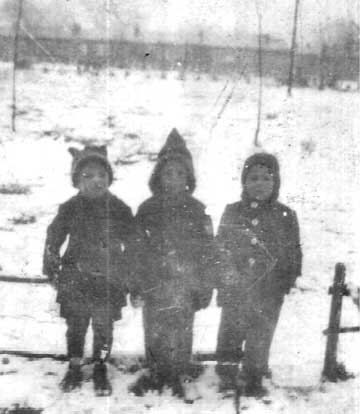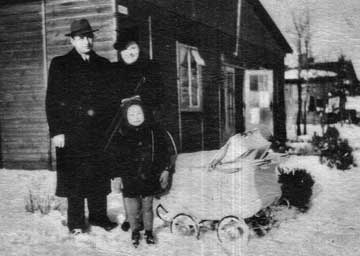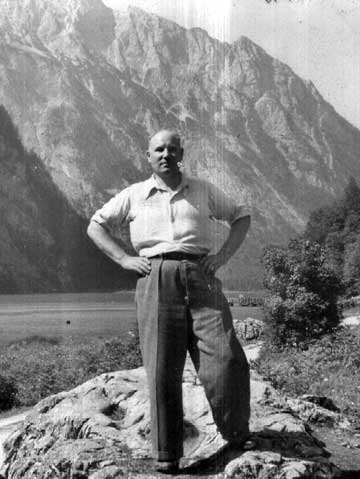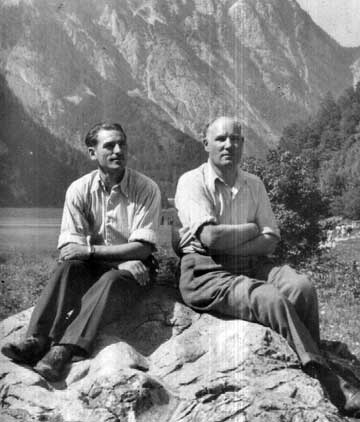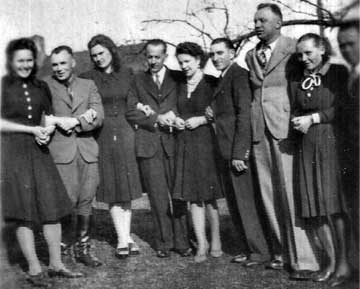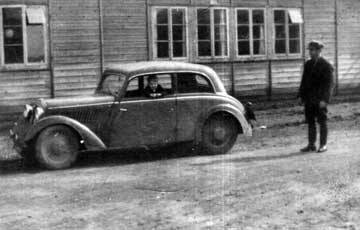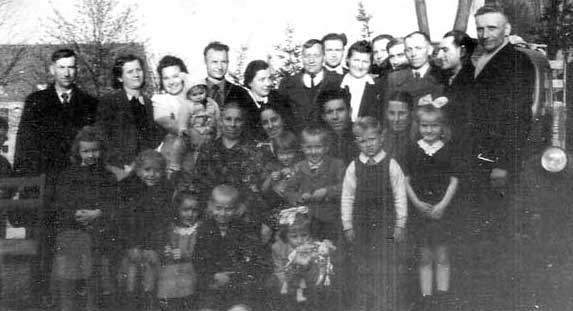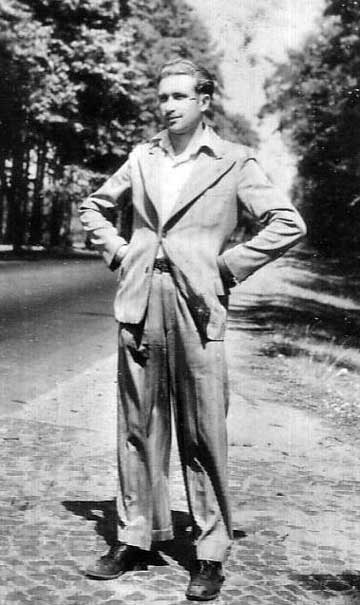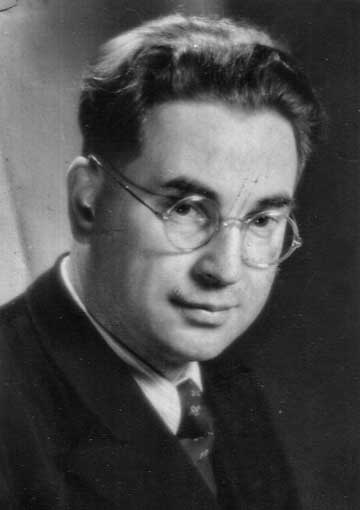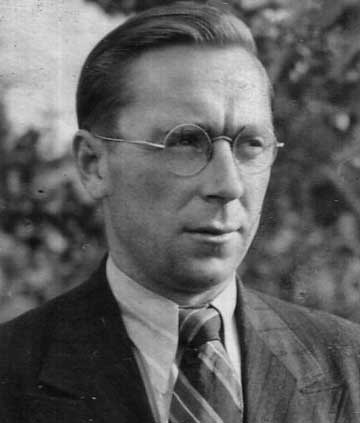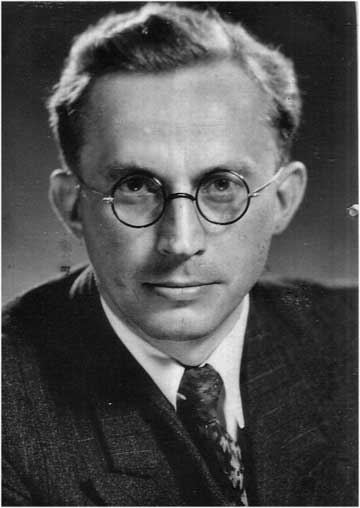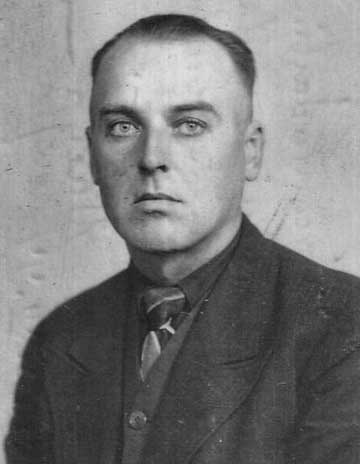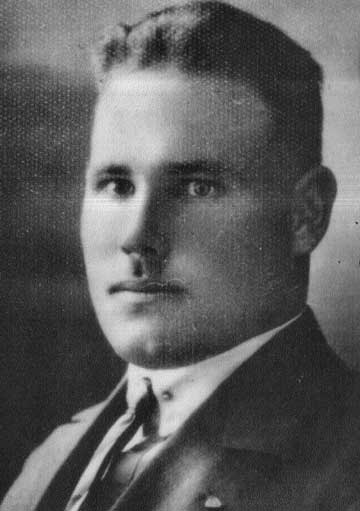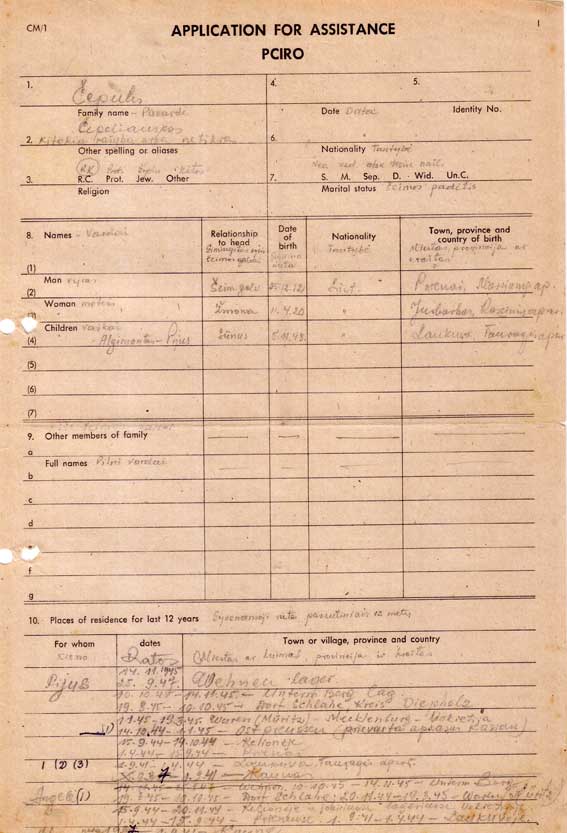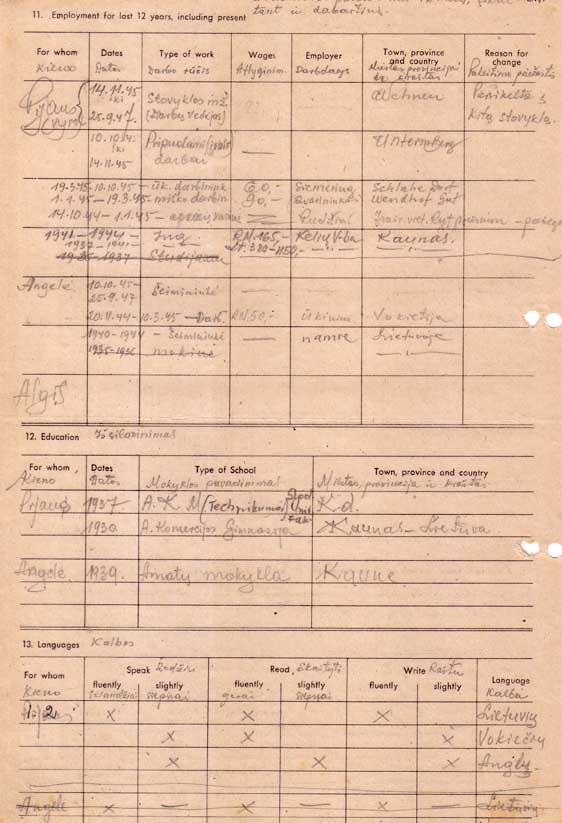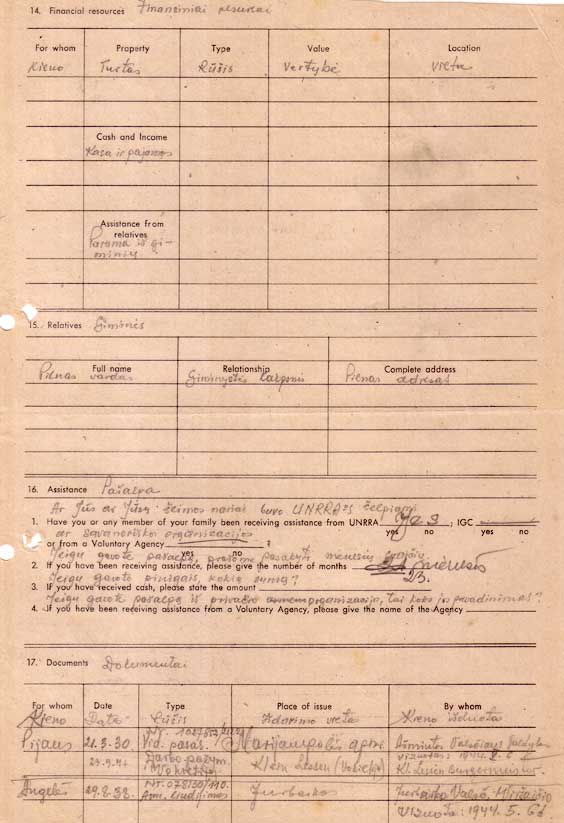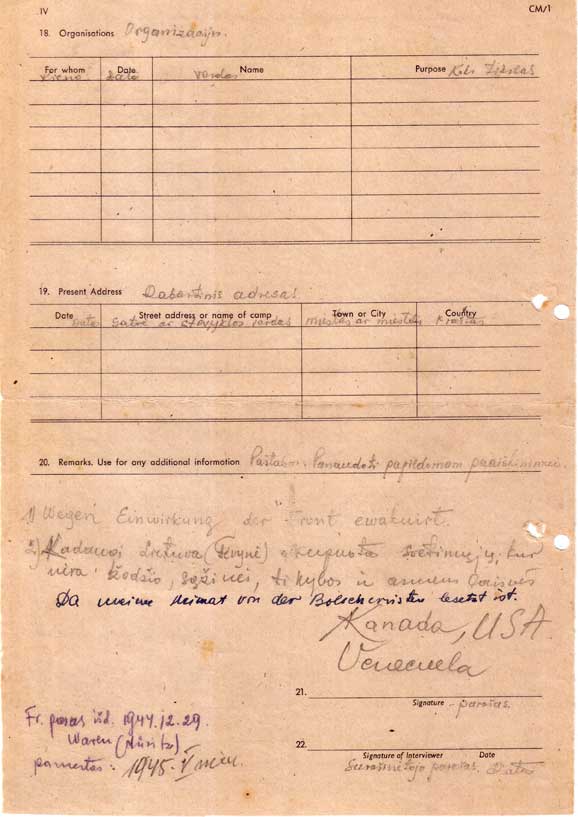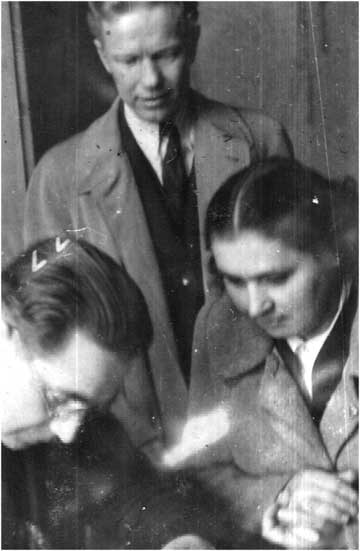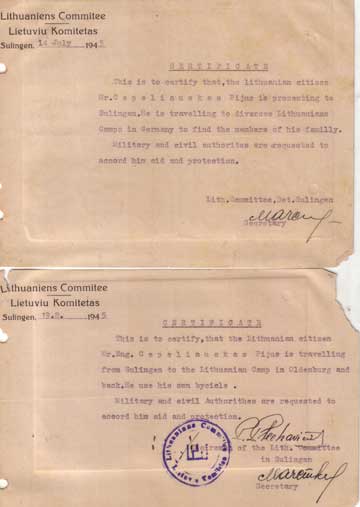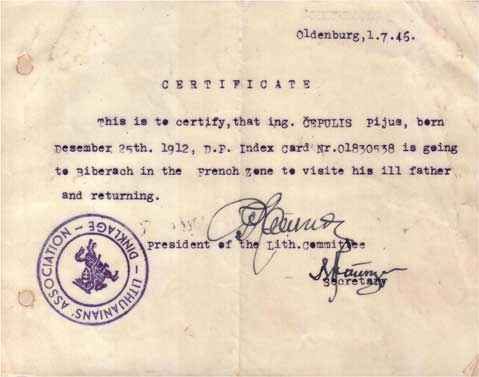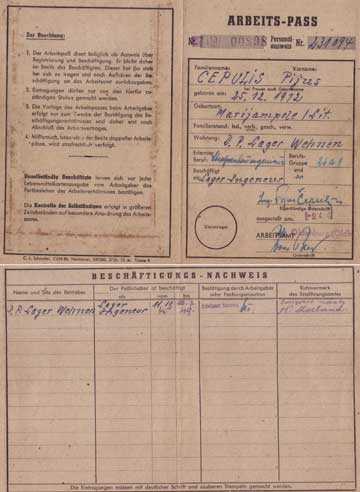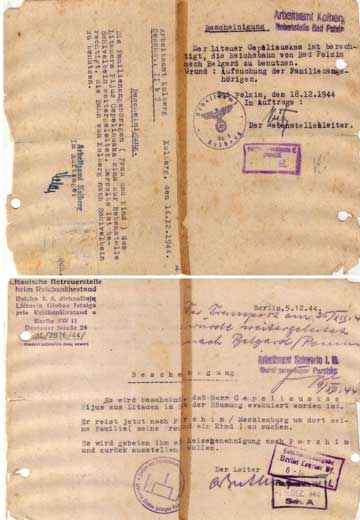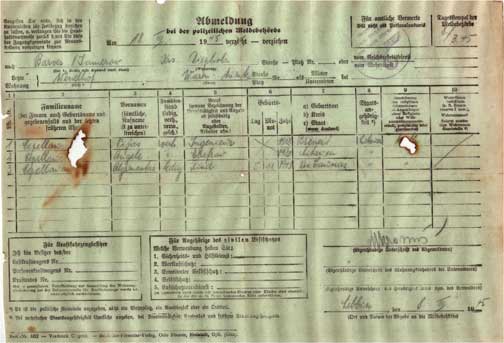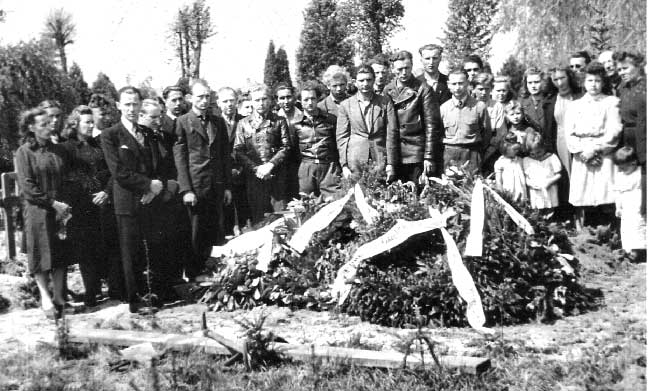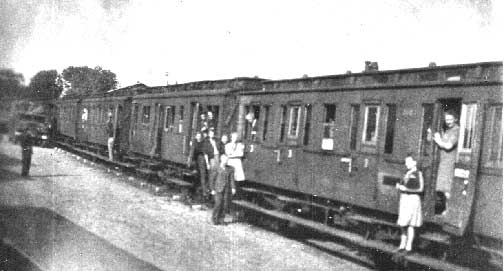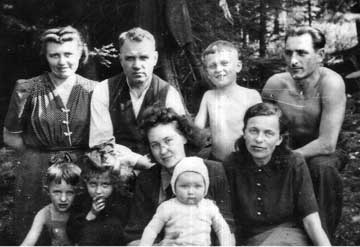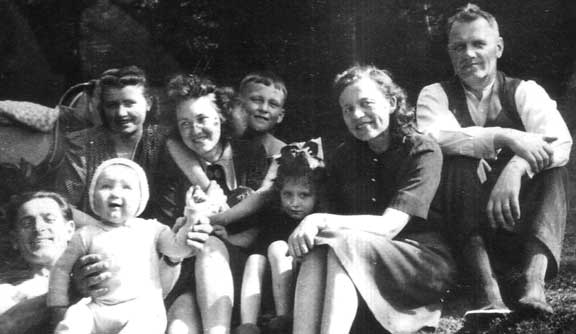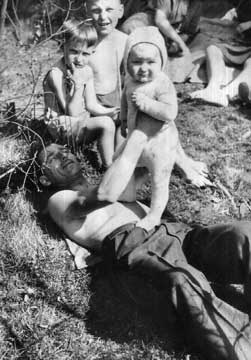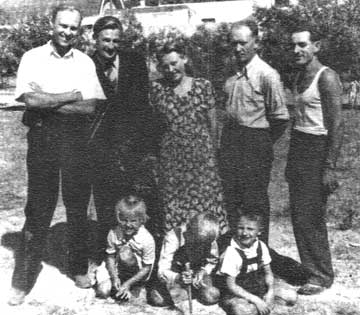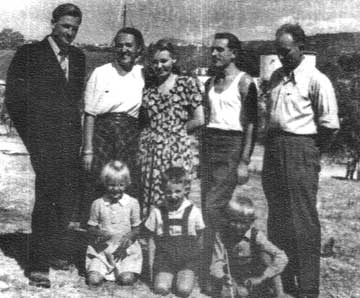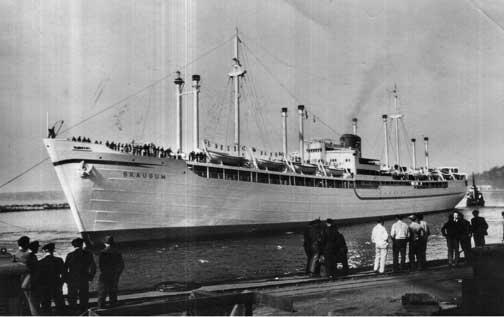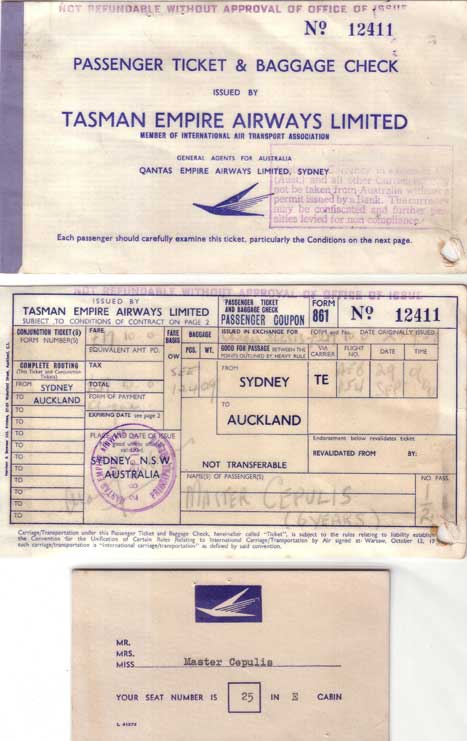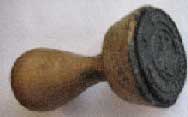Algis Cepulis of New Zealand sherrynandal@farmside.co.nz, shares
some of his photos with us.
If you can identify yourself or your family in
these photos, contact us.
Pijus
Cepulis, my father, was Camp Engineer at Wehnen camp. He set up
a translation and document manufacturing section. I have the Lithuanian
typed copy and I think this copy was a rough translation before
they typed out an English version for IRO. Both copies have been
numbered in red pen. Neither document is signed, just dated and
pages numbered. His office also made up documents such as birth
certificates, education documents and other official papers in
Lithuanian, as he had all the official stamps from Lithuania.
I
still have one. That is why the Sulingen list has place of birth
and date. He also produced his own travel documents and travelled
around Germany meeting stray Lithuanians and arranging their documents
and travel arrangement to get to Wehnen camp. Algis
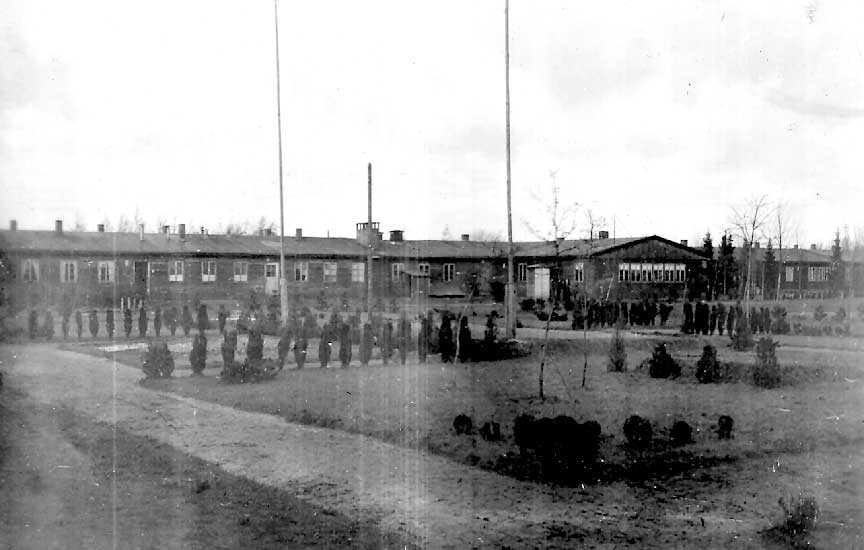
Camp building was former German Aviation School
History
of the Lithuanian National Camp in Wehnen
Establishment:
The Lithuanian National Camp was started to organize on
14th November 1945, when the Baltic camp in Oldenburg and surroundings
where reformed. The Lithuanian Commandant Vincas Norkaitn from the
Baltic camp Ohmstede was charged to organize a new camp in the village
Wehnen in the barracks of the former German Aviation School, 7 km.
northwest from Oldenburg (by the high-road Oldenburg-Bad-Zwischenhahn.
Building,
remount (remodeling), decoration
The Lithuanians
only (without counting the Latvian) have established themselves
in the barracks 1, 2, 3, 4, and #9, in the one half of the 6th
and the bigger part of the administration barrack. They also occupy
1 lavatory, 3 latrines, 1 garage and a small house for the locksmith
and workshop.
There are living rooms in the barracks. The others are occupied by the Kindergarten, elementary school, chapel, canteen, stores and office rooms, bath, kitchen and hall with stage are used together with the Latvians.
The time we occupied the camp, there were only the outside walls were in order. In some barracks, the partition walls were destroyed. There were no windows and frames and doors. Everything was fixed up by the Lithuanians themselves from the materials provided by the UNRRA.
In the spring, the place was decorated with trees and flowers and Lithuanian ornaments. New ways were made and the old one brought in order – all of one's own record.
At present one is building Nissen huts from the materials we received from UNRRA, which will be used for stores. Also a part of the wooden garage has to be pulled down sot there would be timber for the remount of living rooms.
Leadership
From the date
of establishment till September 1st, 1946, the Commandant was
Vineas Norkastis. At present the duties are carried on
by this deputy Jurgis Preihsaitis.
From January 28th, 1946, the Chairman of the Camp Committee was Jurgis Preihsaitis. After his appointment to the Commandant, Chairman of Committee Is Edmundias Leiletusleas (spelling?)
Work All able bodied men of the camp are working in or outside the camp. At the camp administration, housekeeping and education 75 persons are employed: 59 men and 16 women. Outside the camp, at the airfield are working 79 men and one woman; together 80 persons. Three men are working at the airfield in Quackenbrick; 21 men at Central NEH Dept Workshop REME; one at Mil Gov NGTC and 10 in German workshops and farms.
Not counting this works, the men of the camp must cut the allotment for the camp 1400 m3 wood. Persons set free from the mentioned works are the ones of bad health and are doing current works in the camp.
Religion
513
of the camp residents are Roman Catholic, 159 are Evangelic,
four are of the Gravolavish Church and one Baptist. The Catholics
have their chaplain. With their initiative, work and means,
a chapel was established.
Education
In the kindergarten
are 41 children taught by two teachers. The elementary
school was established on January 20th 1946. At present 86 pupils
(45 boys and 41 girls). Seven teachers are working in this six
classes programme school. Lithuanian high school (Gymnasium)
of the Camp Untern Berg. From five students of the camp: four
are studying in Hamburg and one in Goettingen.
Art and culture
There
is a mixed choir in the camp, a dancers group of national dances,
a group of drama artists with 15 members and a church choir.
In spring our group of artists have played a piece from the Lithuanian life in the Radio City Theatre at Oldenburg "Harvest Festival". The same performance together with the choir and national dances were shown in the Lithuanian Camp Gross-Hessepe . Several times they played also in the camp. In the long winter evenings, they will probably appear with a new program. There is a reading room in the camp.
There are 3 bigger groups of scouts in the camp and a patrol of elder scouts. Together 40 boy scouts and 30 girl guides. They have arranged in the short time 8 performance at bonfire and a camp in the forest.
The girl guides are mending stockings, repairing clothing, and doing the laundry for the workers at the airfield, decorating the place, looking for order in the reading room, raising and letting down the flag and taking part at cultural activities in the camp.
Economy
The residents received at once a ration of more than 2000 calories and Red Cross parcels, so the livelihood was good. Now they receive only approximately 1400 calories. The food is bad and insufficient. The food comes from UNRRA.
A part of the camp residents are receiving food through the kitchen; the others are taking the rations and cooking themselves.
Clothing
The clothing
we receive from UNRRA and the Red Cross, most of the clothes
and shoes are old and torn. The camp receives fuel from UNRRA
mostly for the kitchen and only a very small quantity to heat
the rooms in winter. No fuel is given till now for cooking purposes
to the residents themselves.
Sanitation
To look after
the health of the resident, both Lithuanian and Latvian, an ambulance
station was arranged. There a Lithuanian doctor and dentist is
working.
Sport
On February
29th, 1946, a team "Niltis" was founded with following
groups: basketball, football, handball and ping-pong. There were
15 basketball matches and eight football matches; all with foreigners. We
counted 52 active sportsmen.
They received sport outfit from UNRRA, which is already worn out by this time. We are in need of balls.
Courses
At present there are:
1) English courses with 65 auditors;
2) There are driver courses, which finished 18 drivers
3) Tailoring courses for men
Probably there will be organized:
1) serving and tailoring courses for women
2) Lithuanian courses
3) German courses and
4) Electrician course
Authorized by Maurice Frink, Jr. Chief, Public Information - Third US Army Headquarters APO 757 - Edited "Sudavija", Lithuanian Books Editors - Maurice Frink, Jr. Chief, Public Information, leidus, atspausdinta H. Mühlbergerio sp., Augsburge. – Printed by Hieronymus Mühlberger, Augsburg. 7. 1947 1000.
Virselis dail. K. Jezersko. Tirazas 3000 egz. Geresniame popieriuje 50 egz.
UNRRA Team 167 leidus atspausdinta Georg Wagner spausteveje, Nördlingene. "Specktoriaus" leidinys.
With approval of the UNRRA Team 167 at Gunzenhausen. Printed by Buchdruckerei Georg Wagner an Nördlingen.
Genehmigt:
UNRRA Team 188, 17 June 1946
N/1069, 4000
With approval of the UNRRA Team 124 at Munich. Printed by Dischner at Pasing.
Authorized by the US Army APO 758. Amerikiecians leidus atspausdita Dr. Karl Höhno spaustuvej, Ume. druck: Dr. Karl Höhn KG., Ulm (Donau)
Permission to print this prayer book is given by Military Government, Regensburg on August 9, 1945.
Waiting in Naples
To Australia and New Zealand
Auckland to New Zealand When we arrived in New Zealand, Dad used to cart around an old battered suitcase which measured about .5m x 1.0 x 0.3m. Every so often, he would get it out and rummage through it reminicing about the past while I played with the stamps, pens and ink. Out would come newspaper they printed in the camp, official forms and lots of photos. There was a story with each article. Being young, I took little notice. As the years went on, he opened the suitcase less and less. Also, the old suitcase was replaced several times, each time getting smaller and smaller. After I left home, the suitcase seemed to have disappeared. When Dad departed this world, I was going through his effects and found a shoebox. This contained what is on this website and his last official government stamp.
